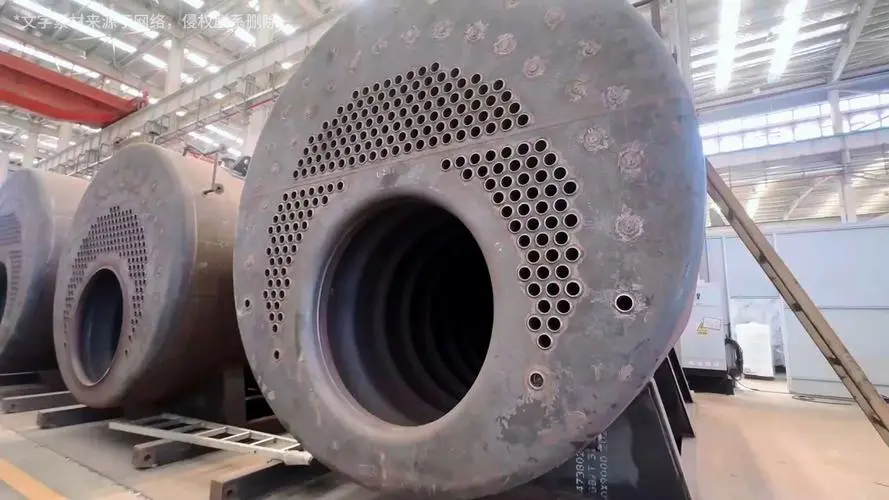
Feb . 16, 2025 06:18 Back to list
natural gas steam furnace
Choosing the right natural gas steam furnace can be a pivotal decision for both residential and industrial heating needs. These systems, renowned for their efficiency, reliability, and environmentally friendly operations, provide a powerful solution for steam generation. The modern consumer seeks not only energy efficiency and cost-effectiveness but also reliability and minimal environmental impact. Here's a comprehensive exploration of natural gas steam furnaces, drawing from real-world experiences and expert guidance to navigate through available options and factors involved in making an informed choice.
From the perspective of environmental sustainability, natural gas is a cleaner burning fuel compared to coal or oil, with significantly lower greenhouse gas emissions. Thus, investing in a high-efficiency natural gas steam furnace aligns with both economic and environmental benefits. Owners and experts advocate routine maintenance inspections, which ensure optimal performance and prolonged lifecycle of the furnace - a practice backed by statistical evidence showing improved longevity and reduced operational costs. Safety, a critical element of trust and reputability in heating systems, is another area where natural gas steam furnaces excel. Strict regulatory compliance and advancements in safety features such as pressure relief valves, automatic shutoffs, and pilots have added layers of safety, reducing risks of malfunctions or accidents. Professional installation and periodic expert inspections are recommended to maintain these safety standards. To truly optimize the investment in a natural gas steam furnace, leveraging expert advice on sizing and system pairing is advisable. Misjudgments in sizing can lead to inefficient operations and increased energy expenditure. Consulting with HVAC (Heating, Ventilation, and Air Conditioning) professionals ensures that your system is well-matched to your needs, taking into account factors like building size, insulation, and local climate conditions. In conclusion, the natural gas steam furnace stands out as an efficient, eco-friendly, and reliable heating solution. Its appeal lies in not just cost-savings on energy bills, but in the promise of reduced environmental impact and enhanced safety features. As you embark on this journey, prioritize acquiring knowledge from credible sources and relying on experienced professionals to make decisions that best suit your unique requirements.


From the perspective of environmental sustainability, natural gas is a cleaner burning fuel compared to coal or oil, with significantly lower greenhouse gas emissions. Thus, investing in a high-efficiency natural gas steam furnace aligns with both economic and environmental benefits. Owners and experts advocate routine maintenance inspections, which ensure optimal performance and prolonged lifecycle of the furnace - a practice backed by statistical evidence showing improved longevity and reduced operational costs. Safety, a critical element of trust and reputability in heating systems, is another area where natural gas steam furnaces excel. Strict regulatory compliance and advancements in safety features such as pressure relief valves, automatic shutoffs, and pilots have added layers of safety, reducing risks of malfunctions or accidents. Professional installation and periodic expert inspections are recommended to maintain these safety standards. To truly optimize the investment in a natural gas steam furnace, leveraging expert advice on sizing and system pairing is advisable. Misjudgments in sizing can lead to inefficient operations and increased energy expenditure. Consulting with HVAC (Heating, Ventilation, and Air Conditioning) professionals ensures that your system is well-matched to your needs, taking into account factors like building size, insulation, and local climate conditions. In conclusion, the natural gas steam furnace stands out as an efficient, eco-friendly, and reliable heating solution. Its appeal lies in not just cost-savings on energy bills, but in the promise of reduced environmental impact and enhanced safety features. As you embark on this journey, prioritize acquiring knowledge from credible sources and relying on experienced professionals to make decisions that best suit your unique requirements.
Share
Next:
Latest News
-
High-Efficiency Commercial Oil Fired Steam Boiler for Industry
NewsJul.30,2025
-
High-Efficiency Biomass Fired Thermal Oil Boiler Solutions
NewsJul.30,2025
-
High Efficiency Gas Fired Thermal Oil Boiler for Industrial Heating
NewsJul.29,2025
-
High-Efficiency Gas Fired Hot Water Boiler for Sale – Reliable & Affordable
NewsJul.29,2025
-
High Efficiency Biomass Fired Hot Water Boiler for Industrial and Commercial Use
NewsJul.29,2025
-
High-Efficiency Biomass Fired Hot Water Boiler for Industrial Use
NewsJul.28,2025
Related PRODUCTS
Copyright © 2025 HEBEI HONGZE BOILER MANUFACTURING CO., LTD. All Rights Reserved. Sitemap | Privacy Policy






















